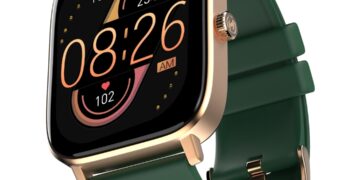In the past few decades, physical therapy has evolved dramatically. Gone are the days when recovery simply meant a set of repetitive exercises. Today, thanks to rapid technological innovations and research-backed techniques, physical therapy treatments are more effective, efficient, and personalized than ever before.
From robotics and virtual reality to wearable sensors and regenerative medicine, the field of physical therapy is embracing the future with open arms. These advances are helping patients recover more quickly, prevent injuries, manage chronic conditions, and even improve their performance in daily life and sports.
Whether you’re recovering from surgery, dealing with chronic pain, or simply trying to move better, understanding these advancements can help you make informed choices about your care.
1. Personalized Treatment Plans Using AI and Data Analytics
One of the most promising developments in physical therapy is the use of artificial intelligence (AI) and data-driven insights. Today’s advanced software can analyze a patient’s movement patterns, posture, and even healing timeline using data collected from multiple sources like video analysis, motion sensors, or wearables.
With this technology, physiotherapists can create personalized rehabilitation plans tailored to the unique needs of each patient. These plans can be adjusted in real time based on progress, ensuring optimal recovery speed and outcomes.
For example, someone dealing with lower back pain might receive a treatment plan that adapts week by week, depending on their pain level, mobility, and strength gains. This level of personalization wasn’t possible even ten years ago.
2. Virtual Reality (VR) for Engaging Therapy
Virtual reality is no longer just for gamers. In the realm of physical therapy, VR is being used to improve balance, coordination, and motor skills in a fun and interactive way. Patients wear VR headsets and perform therapeutic exercises in a virtual environment that keeps them motivated and engaged.
VR can also simulate real-world scenarios, such as walking on uneven ground or reaching for objects, which is especially helpful for people recovering from strokes or neurological conditions. The immersive environment challenges patients to move and react naturally, enhancing neuroplasticity and recovery.
In clinics offering Physiotherapy in Abbotsford, VR-based therapy is becoming increasingly popular for both young and older patients who enjoy a more interactive recovery experience.
3. Robotic Assisted Therapy
Robotics is playing a big role in the advancement of rehabilitation treatments. Robotic exoskeletons and assistive devices are being used to help patients relearn how to walk or regain arm and leg movements after injuries or surgeries.
These devices provide support, resistance, or guidance depending on the patient’s condition, allowing for more repetitions with precise motion. This leads to faster neural adaptation and improved muscle control.
For example, stroke survivors often benefit from robotic arms that assist with repetitive movements critical for retraining the brain and muscles.
4. Wearable Technology and Biofeedback
Wearable devices have made it possible to monitor movement, posture, and muscle activity in real time. These smart wearables , often embedded with sensors, collect data that can be reviewed by the physiotherapist to adjust exercises, track recovery, and prevent future injuries.
Some devices provide real-time biofeedback to the patient during exercises. For example, if someone is compensating with the wrong muscle group during a leg raise, the device can alert them instantly—helping them correct form and maximize benefit.
This type of real-time feedback leads to more accurate, safe, and efficient rehab, particularly for athletes and individuals recovering from complex injuries.
5. Tele-Rehabilitation and Remote Therapy
The pandemic gave rise to a significant increase in tele-rehabilitation services, and many clinics have continued to offer it even after restrictions eased. With video consultations, remote monitoring tools, and online exercise programs, patients can now receive quality care without visiting the clinic in person.
This is especially beneficial for people living in rural or remote areas. For example, some patients seeking Physiotherapy Abbotsford services may opt for a hybrid model, visiting the clinic for hands-on care while doing their exercises at home under virtual supervision.
Tele-rehab also helps patients stay consistent with their therapy, as they can easily connect with their physiotherapist for follow-ups, motivation, and progress tracking.
6. Shockwave Therapy
Extracorporeal Shockwave Therapy (ESWT) is a non-invasive treatment that uses high-energy sound waves to stimulate healing in tissues. It is commonly used to treat tendinopathies, plantar fasciitis, calcific shoulder tendinitis, and other chronic pain conditions.
Shockwave therapy works by increasing blood circulation, breaking down calcified tissues, and stimulating collagen production. Many patients report significant pain relief after just a few sessions.
It’s a promising alternative to surgery or long-term medication for musculoskeletal issues—and a growing number of physiotherapy clinics in Canada are offering this option.
7. Dry Needling and Advanced Manual Therapy
While traditional manual therapy remains foundational, advanced techniques such as dry needling have gained widespread recognition in recent years. Dry needling involves inserting thin needles into trigger points or tight muscles to relieve tension and improve function.
This technique is often combined with manual joint mobilizations, myofascial release, and neurodynamic techniques for a well-rounded, hands-on approach.
Clinics offering Physiotherapy in Abbotsford increasingly incorporate these methods to treat complex pain patterns, improve mobility, and reduce reliance on medications.
8. Blood Flow Restriction (BFR) Therapy
BFR therapy is a newer technique where a cuff is used to partially restrict blood flow to a limb during low-intensity exercises. This allows patients to build muscle strength and endurance without placing heavy loads on joints.
It’s especially beneficial for post-surgical patients, elderly individuals, and athletes recovering from injury. Studies show BFR can help patients gain strength up to twice as fast compared to traditional rehab methods.
As more research confirms its safety and effectiveness, BFR is becoming a go-to method in modern physical therapy clinics.
9. Regenerative Medicine and Stem Cell Therapy
Although still in the early stages of clinical use, regenerative medicine is set to revolutionize physical therapy. Treatments like platelet-rich plasma (PRP) injections and stem cell therapy are being explored for their ability to regenerate damaged tissues, reduce inflammation, and accelerate healing.
When used alongside physical therapy, these treatments may reduce recovery times and improve function in conditions like osteoarthritis, tendon tears, and ligament injuries.
While not yet mainstream in every clinic, it’s an area that patients and providers are watching closely.
10. Cognitive and Emotional Integration in Rehab
Recent developments in physical therapy also acknowledge the mind-body connection. Pain and recovery are not purely physical processes; emotions, mindset, and stress play a big role too.
Techniques like mindfulness-based physical therapy, cognitive behavioral strategies, and motivational coaching are being integrated into rehab programs to help patients manage pain, cope with setbacks, and stay committed to their recovery.
This holistic view of therapy is particularly effective for individuals with chronic pain, where mental health can impact physical progress.
The Future of Physical Therapy Is Here
As these innovations continue to evolve, patients can expect even more personalized, engaging, and effective treatment options in the years to come. The blending of technology with human expertise is making physical therapy more accessible and impactful than ever before.
Clinics like those offering Physiotherapy Abbotsford services are at the forefront of this transformation, providing cutting-edge care to help people move, heal, and live better.
Whether you’re recovering from a sports injury, managing a chronic condition, or looking to enhance performance, today’s physical therapy treatments offer real hope and lasting solutions.




























































